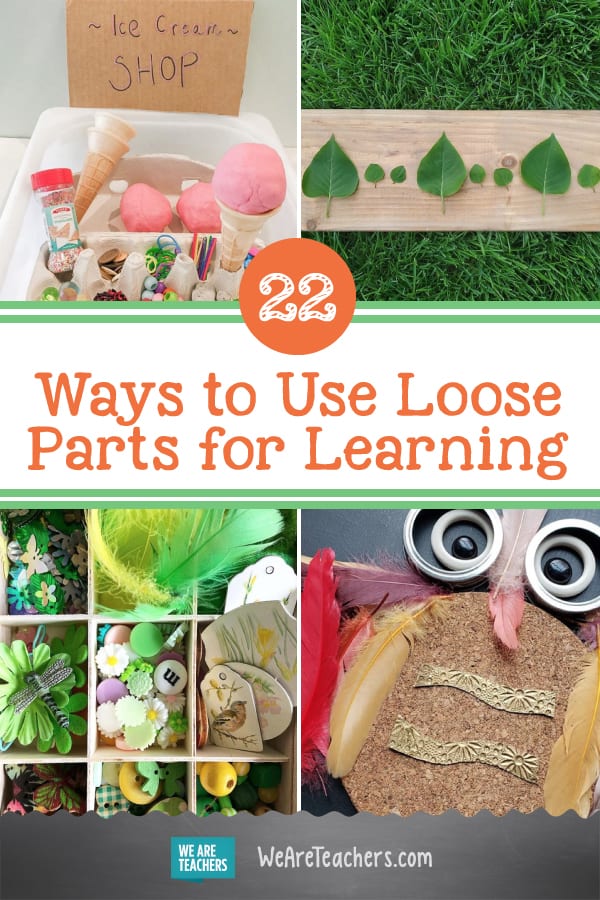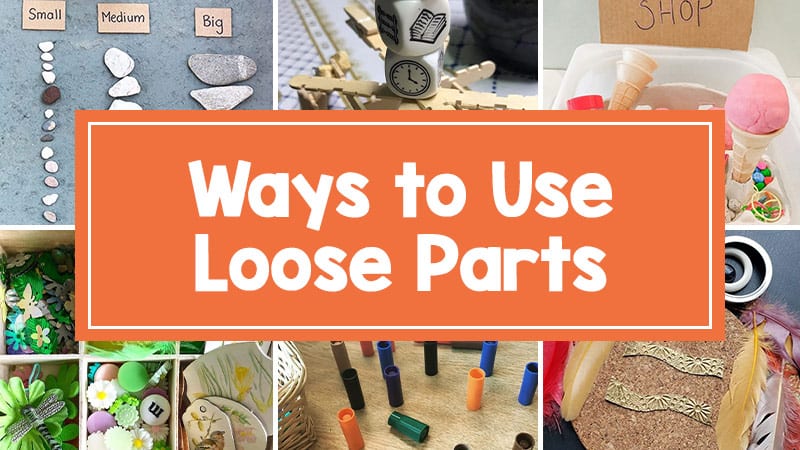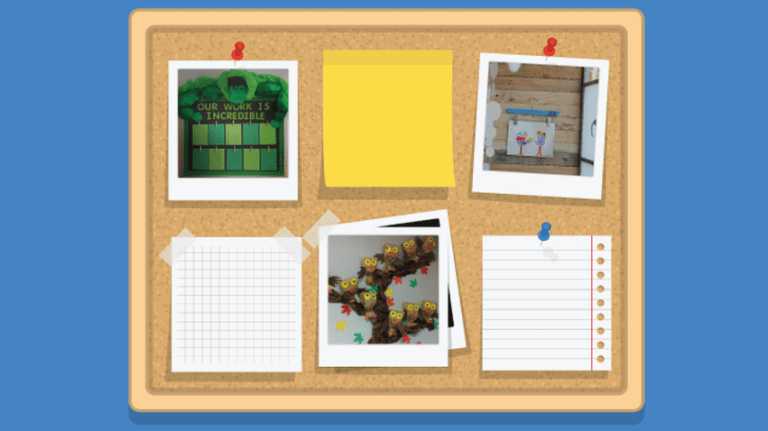Buttons, pom-poms, rocks, bottle caps, acorns, blocks … the possibilities for loose parts are virtually endless. Loose parts are collections that can be used for open-ended activity—sensory play, design and building, storytelling, problem-solving, inquiry, and more.
For the full run-down on loose parts theory, we suggest diving into Lisa Daly and Miriam Beloglovsky’s Loose Parts book series, especially their latest Loose Parts 4: Inspiring 21st-Century Learning.
Here are just a few reasons to love loose parts.
Everyone enjoys creating with “stuff.”
Unstructured loose parts play is a foundational element of many high-quality early childhood programs, but they actually hold plenty of learning potential for all ages. Tinkering and making are pleasantly engaging for everyone!
Because loose parts can be used in so many ways, they are ideal for multi-age environments. With the same pile of beach pebbles, a preschooler could make piles or towers, a kindergartner could practice counting, and a third grader could model multiplication problems by creating arrays.
Loose parts are equitable and earth-friendly.
Many parts are found, recycled, or natural items—all free and environmentally-conscious. Students and families can easily create collections for at-home learning and play. And, teachers can stock classrooms without spending any money.
Loose parts are easily kept clean.
Okay, so we know what you’re thinking: this sounds like so many items to clean! There are plenty of loose parts options that can easily be washed with soap and water in a colander and air-dried, or washed in the dishwasher in a mesh bag. Or, personal collections can be made for individual student use. Class collections could also be rotated in and out of use.
Are you as excited as we are to use more loose parts? Here are 22 ideas to get you started.
[contextly_auto_sidebar]
1. Turn recycled loose parts into blocks.
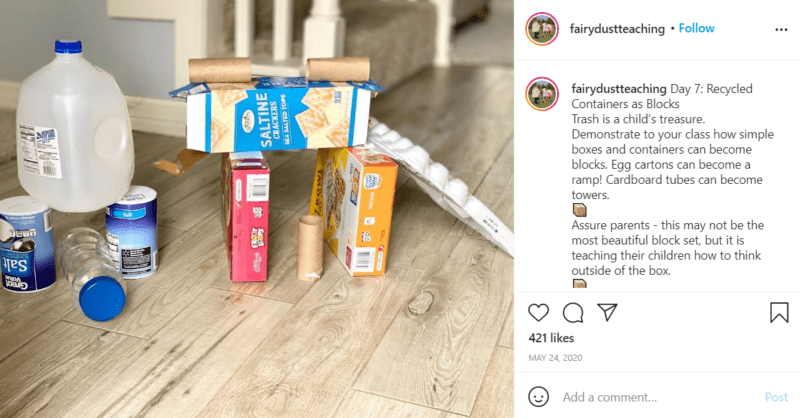
Block play is beneficial for all ages to explore STEM concepts and stretch creativity. And using recycled loose parts as blocks means all kids can have them at home! (Plus, pretty much every kid we know goes wild over the chance to dive into the recycling bin.)
Source: @fairydustteaching
2. Use loose parts as a tool for sharing.
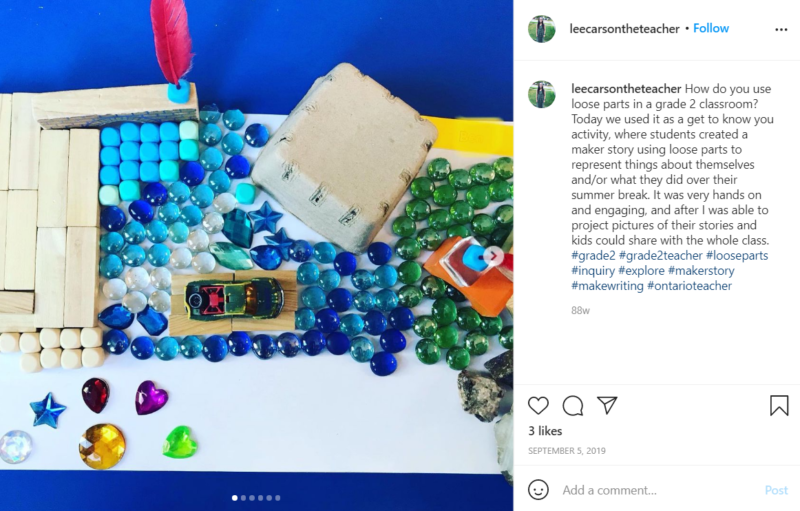
Asking students to share something about themselves using these parts can be so powerful.
Source: @leecarsontheteacher
[contextly_auto_sidebar]
3. Create “editable” artwork.
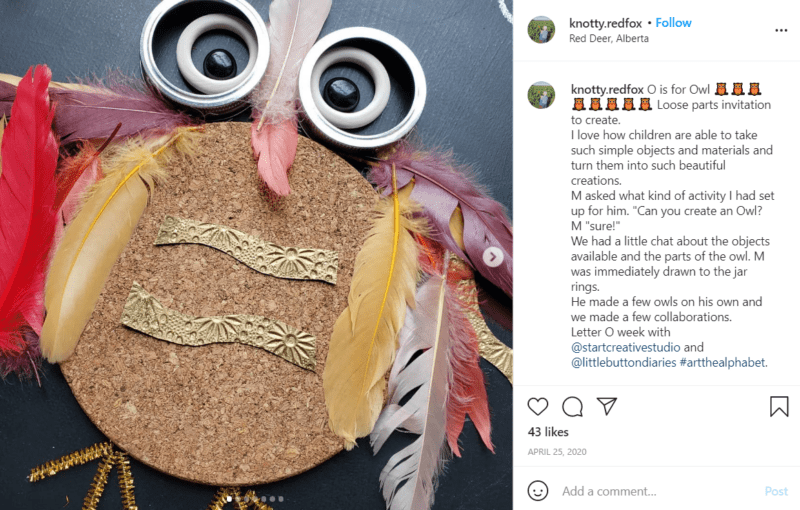
Collage without the fuss of glue is such fun. (Of course, you can always snap a photo to preserve it.) And, we love linking loose parts artwork to revising writing. An invitation like this could open a mini-lesson on looking at something again, adding more, taking away, and making changes. It turns out these strategies work for both adorable owls and student writing!
Source: @knotty.redfox
4. Refresh a familiar activity.
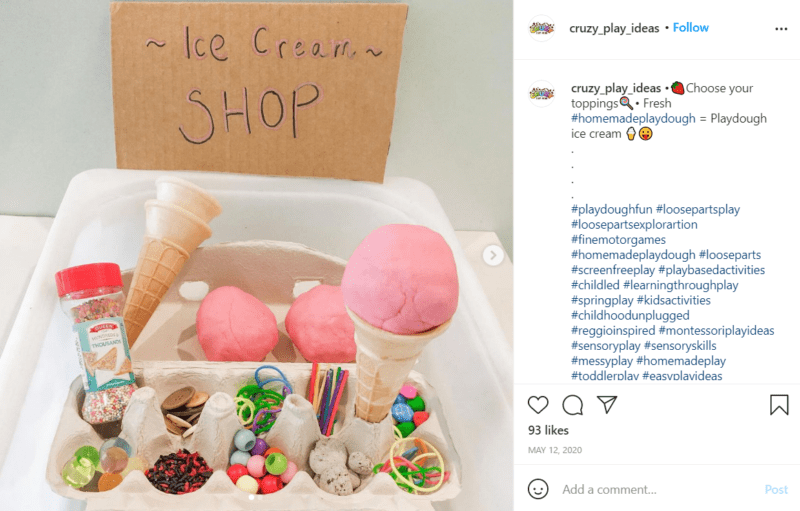
Spark creativity by adding new loose parts to a familiar activity. Everyday playdough is totally rejuvenated by all these ice cream “toppings.” (This is not just for preschool, either. Older kids LOVE this.)
Source: @cruzy_play_ideas
5. Celebrate the season.

Loose parts are so great for celebrating a new season. An open-ended play session with a seasonal collection can do wonders for inspiring seasonal writing, too.
Source: @thewhimsicalcloud
6. Explore emotions.

Create a safe context for kids to explore and talk about a range of emotions with loose part faces! For older kids, we love talking in depth about how body language and facial cues reflect our emotional states—check out those angry pine branch eyebrows.
Source: @loose_parts_play
7. Practice sorting and classifying.
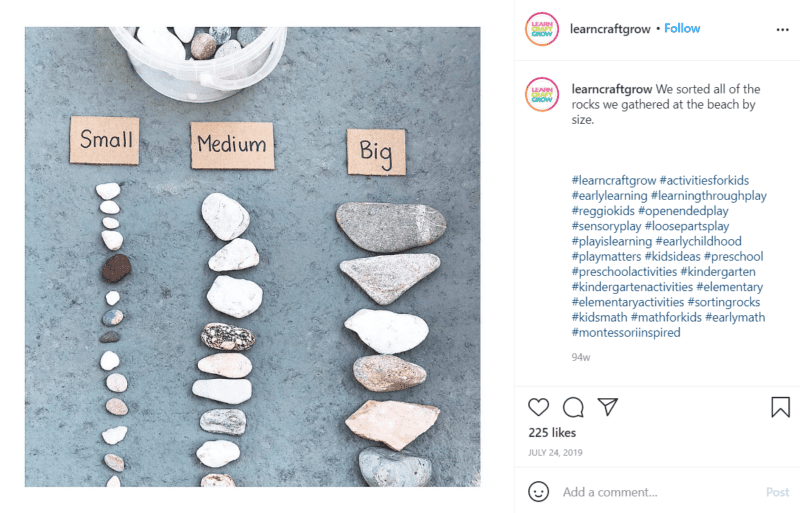
There are obviously unlimited variations here. We like to provide kids with categories for sorting a collection (as this image shows) or challenge them to devise their own.
Source: @learncraftgrow
8. Make DIY math manipulatives.
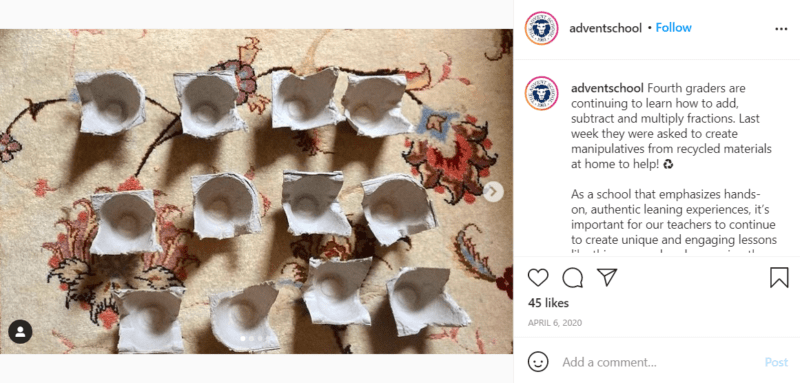
You know tangible items make learning and practicing math concepts easier. We love this invitation to create math manipulatives out of recycling bin or household treasures.
Source: @adventschool
9. Model addition and subtraction problems.

We love how these popsicle-stick 10-frames perfectly hold a variety of loose parts for modeling combining and separating problems.
Source: @ophdurham
10. Study 3-D shapes
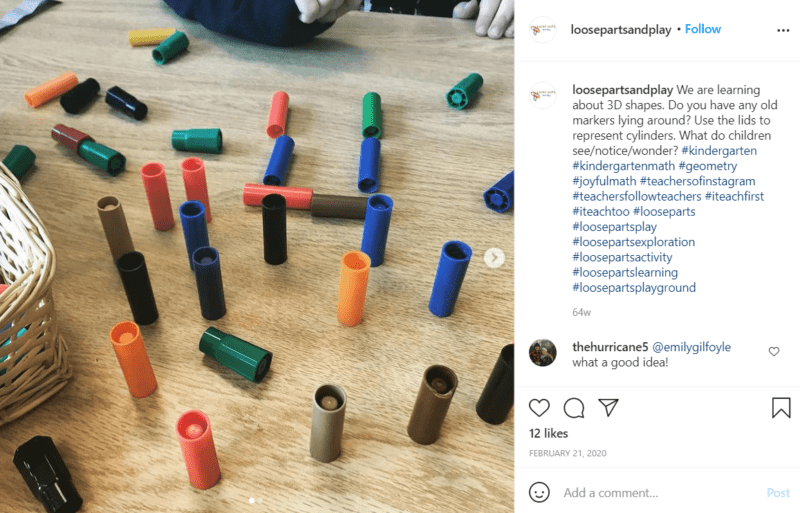
Many loose parts are perfect examples of 3-D shapes. We love the idea of using old marker caps to explore cylinders—something we all have in our classrooms!
Source: @loosepartsandplay
11. Explore symmetry.
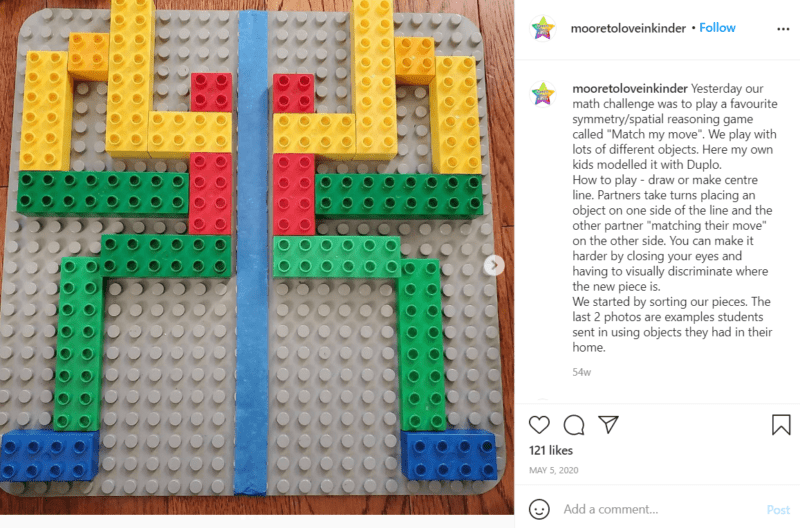
Providing a workspace with a line of symmetry built-in is a natural way to invite kids to explore creating symmetrical designs.
Source: @mooretoloveinkinder
12. Practice patterning

Outdoors or inside, loose parts beg to be arranged in patterns!
Source: @mooretoloveinkinder‘s patterns in nature
13. Tell stories and identify story elements.
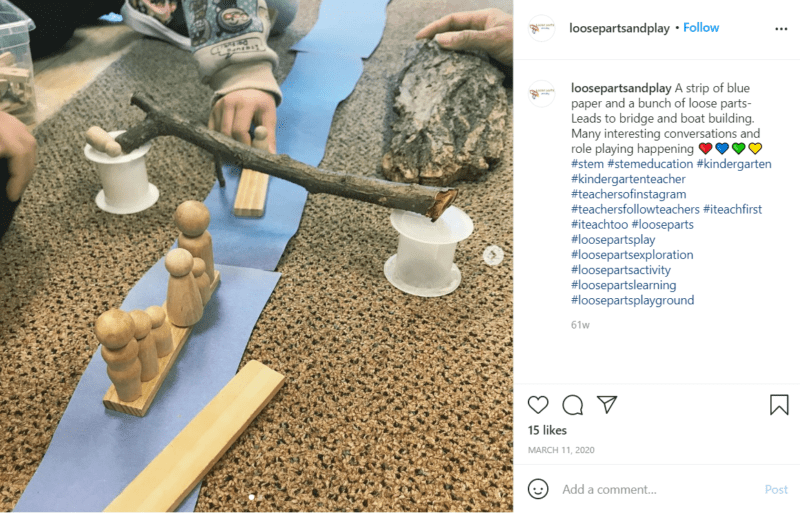
Loose parts are the perfect segue into storytelling. Using them to tell children’s stories is a great out-of-the-box chance to talk about story elements. We can imagine several problem-solution pairings in this bridge and boat scenario!
Source: @loosepartsandplay‘s storytelling display
14. Spark, represent, and organize ideas in writing.
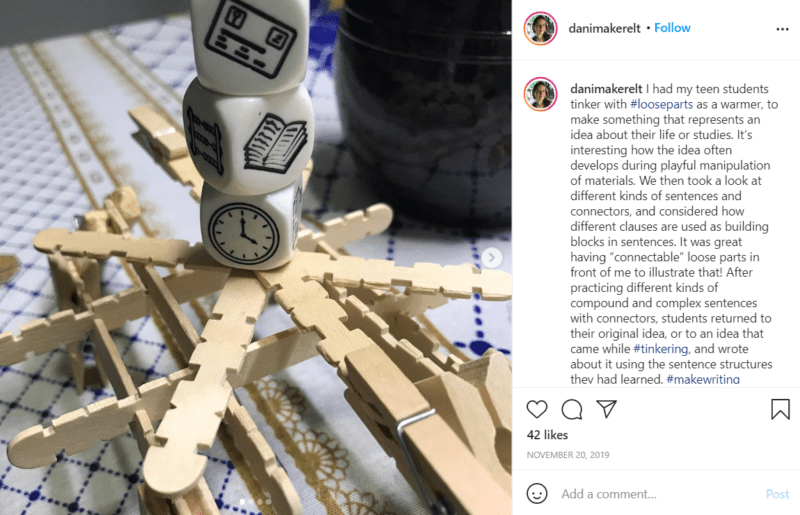
For a fascinating and innovative approach to using loose parts to support the writing process with kids, you’ll definitely want to check out Angela Stockman’s Make Writing approach.
Source: @danimakerelt
15. Recreate an image in unique ways.

Loose parts play encourages flexibility and innovation. Challenge students to create a familiar image—and celebrate the range of results!
Source: @adventschool‘s loose parts lion
16. Create a habitat.
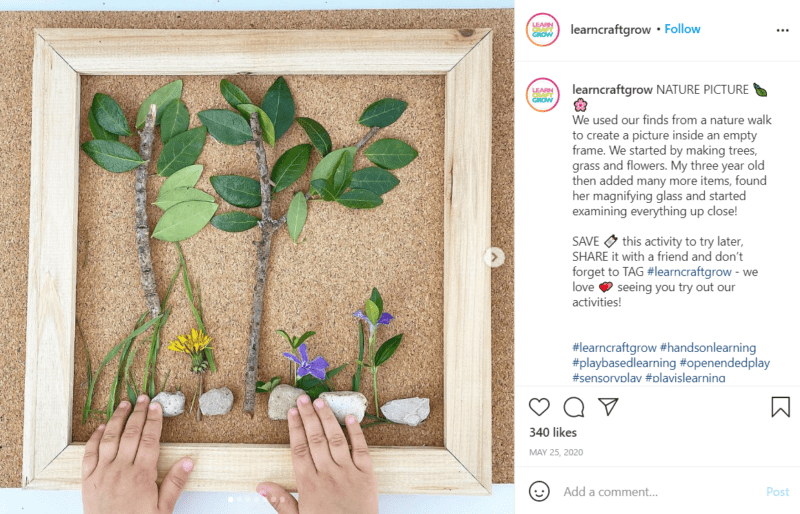
Any kind of nature picture is fun (and a great way to use nature walk finds). We also like to use this to invite kids to create their own versions of different habitats.
Source: @learncraftgrow‘s loose parts nature picture
17. Learn about simple machines.

Experimenting with loose parts to create simple machines links to science standards for so many grades. Check out this amazing Ultimate Playground Project!
Source: @schooling_in_style
18. Experiment with buoyancy.

You can’t go wrong with using a variety of parts for a classic sink or float test—but we also love using them for building and testing boats!
Source: @mum2_5
19. Study and emulate artists’ work.

Andy Goldsworthy is a classic artist to study in connection with loose parts. Kids + nature mandalas give us all the heart eyes.
Source: @thespookyartroom
20. Expand the definition of “playground.”

Large loose parts outdoors get kids of all ages playing, thinking, and collaborating in new ways.
Source: @learning_play_and_wonder
21. Teach coding concepts.
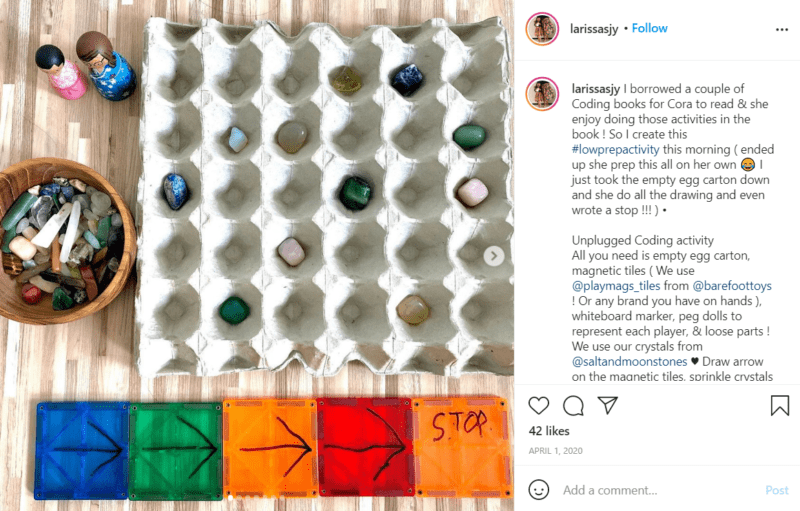
Loose parts pair perfectly with #unpluggedcoding. Kids can use them to create a maze and then code to move figures through the course.
Source: @larissasjy
22. Create stop motion projects.
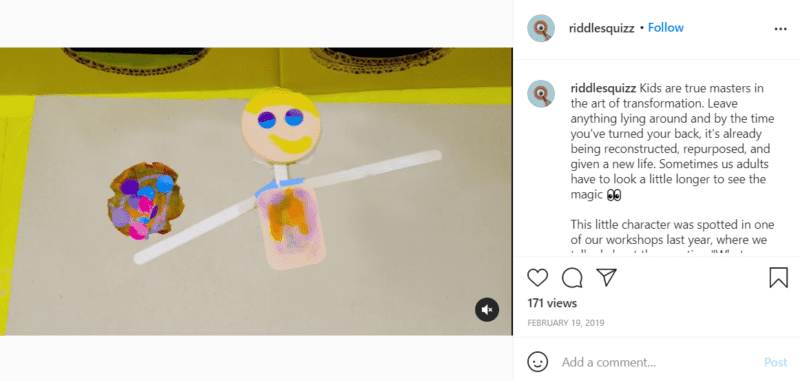
Traditional loose parts play is, by definition, low-tech, but that doesn’t mean you can’t add a tech element. They are an ideal resource for creating characters and settings for stop motion videos.
Source: @riddlesquizz
Do you use loose parts to support learning? Share your favorite ideas in the comments!
Plus, our favorite building toys for kids.
